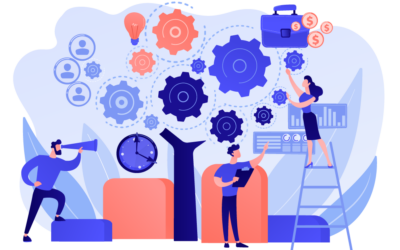If your business is looking to migrate workloads and systems, you’ll need to ensure that you’ve done careful planning beforehand. Be aware of the potential challenges and unexpected situations that may arise in your migration journey.
You may be planning to migrate to the cloud for the first time, or moving to the latest SharePoint version, or even just to reorganise your data and content better.
In any case, check out our SharePoint migration checklist for a general overview of steps to take. Minimise the risks and be prepared for a smooth migration.
Identify challenges
Your first step should be to clearly identify your current pain points and the challenges that you’re facing. It’s beneficial to understand what problems the new solution will fix. Ensure your migration plans align with your business goals.
These are some of the most common reasons that companies are looking for SharePoint migration:
- Advanced security features
- Better support
- More storage capacity
- Customizable features
- Zero maintenance
- Automated features
Auditing
The next step is to audit your current environment. Make notes on what your current solution is, for example; is it an outdated version of SharePoint/SharePoint Online, is it on-prem, or what other systems are connected to it? What departments and teams currently have access to it and is there any custom functionality that needs to be imported over to the new solution? These will help shape your migration and avoid missing key content in the final version.
Inventory clean-up
We strongly recommend tidying your inventory after evaluating the existing system. We recommend focusing on the most important content and avoiding outdated and irrelevant data being imported unnecessarily. Things to look out for are duplicate content, unused workflows and data, and orphaned users. This includes restructuring disorganised content prior to the migration so it progresses smoothly.
Preparation
Make a plan of action before starting the migration process. This way, you’ll have clear steps to take and avoid mistakes. The changeover process in a SharePoint migration plan example entails:
- Stopping the workflows that are about to be migrated
- Setting your previous database to read-only
- Backing up all of your content before you begin the move to SharePoint Online
- Performing a database attach-upgrade when migrating from SharePoint 2013
- Using the SharePoint migration tool in scanning, packaging, uploading, and importing your files
- Configuring user profiles
Inform users
Before you move, you’ll need to communicate with your teams so they know the timeframe, impact, and what to expect during the migration so they won’t be caught off guard. You may also need to provide training and support as they get to grips with the new system after the migration is complete.
Moving in waves
Some companies prefer to migrate in phases as it allows them to build content maps, which ensures teams can track the progress of content as it is migrated. The option of migrating one workload at a time makes the process easier to manage and allows companies to resolve individual issues as they pop up.
An example process would look like this:
- Pause the workflows that are to be migrated
- Change previous database to read-only
- Securely back up all content before the migration
- Perform a database attach-upgrade
- Use the SharePoint migration tool to assist the move
- Configure all necessary user profiles
Post-migration checks
Finally, before launching the completed system to everybody, make sure you have a post-migration testing checklist. Test that everything works as intended, including permissions, workflows, connectors, performance and UI. You’ll also need to ensue all the data has been moved over completely and is accessible. Remember to make a backup of your new system and run a full crawl.
We’ll help you with your SharePoint migration checklist
Migrating your entire company to a new SharePoint system can be challenging and time-consuming, especially without the right planning. Get in touch with our SharePoint experts to guide your migration.
Original article featured on our Influential Software blog.
Related SharePoint posts
SharePoint Online security overview
With SharePoint being a popular system for enterprise users and global organisations, Microsoft has ensured it comes with the latest security features. However, as with any system, these security parameters need to be properly set up and optimised to be truly safe to...
SharePoint 2013 Workflows Reach End Of life
It's no secret that Microsoft is paving the way in technical innovation. But as their tool kit grows, they must say goodbye to some of their older innovations. In 2020, Microsoft retired the SharePoint 2010 workflow and as a continuation of this, they'll be retiring...
Eight Reasons To Use SharePoint As A Intranet
One of the most common questions our delivery team face is, “What’s the best base technology for a company intranet?” Regardless of their business size, way of working, or industry, our answer is "SharePoint as a intranet is the best choice". From a business point of...





Recent Comments